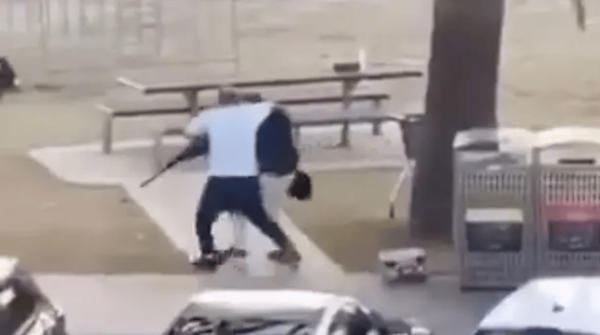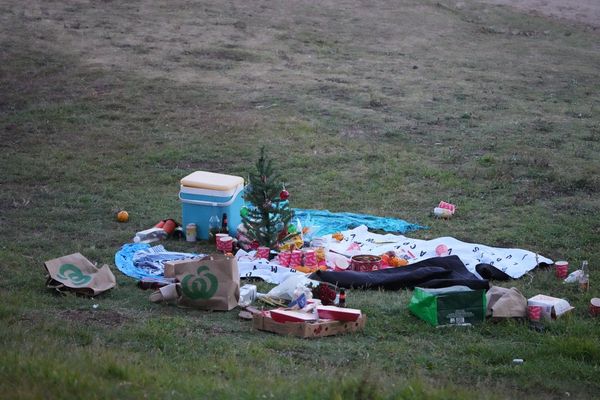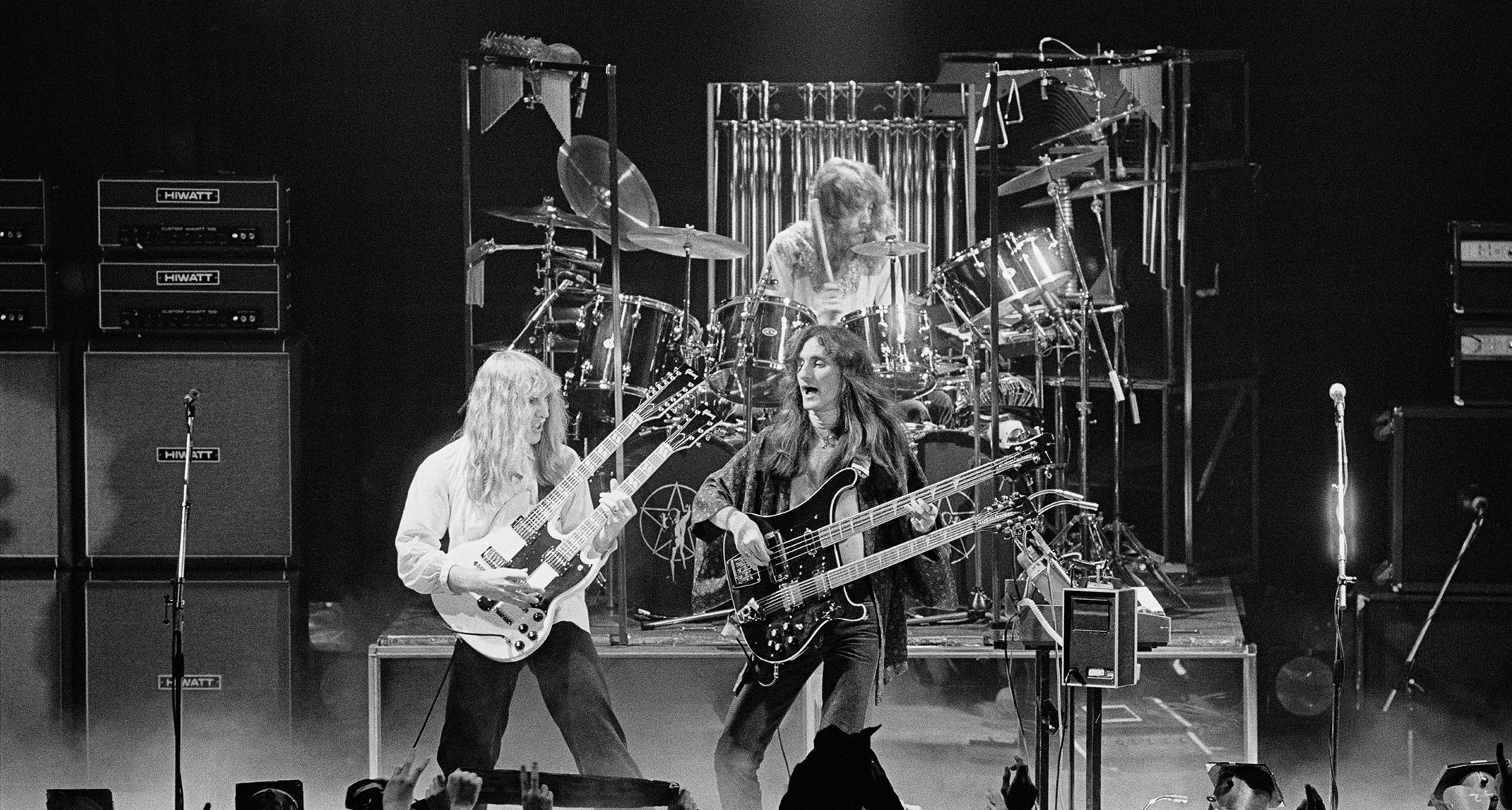
There are occasions in every great band’s life when their creative forces culminate to a degree where they can no longer be contained and it is time to turn all this imagination and musical nous loose on ever more ambitious arrangements. Rush had reached that point by 1978.
If we’re going to be telling the story of how the legendary Canadian prog trio applied the coup de grâce to Hemispheres by playing us out with La Villa Strangiato, an instrumental just shy of 10 minutes long, inspired by the REM activity of guitarist Alex Lifeson, then we have to go back a year, to the summer of ’77, when they arrived at Rockfield Studios, in Wales, fully prepared to execute their most-daring musical high-wire act yet, tracking Xanadu in one take.
Rush had, of course, done epic. A year earlier, with 2112, they had perfected blockbuster conceptual rock, the thrilling union of electric guitar and synthesizer redrawing rock’s boundaries, expanding them – and furthermore atoning for commercial failure of Caress Of Steel on their own terms.
“We wanted to develop that style. Because there was so much negative feeling from the record company and our management was worried, we came back full force with 2112,” said Lifeson, speaking to Guitar World in 1996. “There was a lot of passion and anger on that record. It was about one person standing up against everybody else.”
Rush’s long-form songwriting would test their audience yet reward them in kind. They knew how to hold people’s attention. Neil Peart, their late drummer and lyricist-in-chief, had a gift for story in verse. Bassist, lead vocalist and keyboard player Geddy Lee could make those big ideas relatable to all. Xanadu in a single take, however, was a new level of daring; this was Philippe Petit walking the wire between the Twin Towers of the World Trade Center. It was the perfect way to open the sessions to A Farewell To Kings.
But then, as Lifeson tells us, speaking to MusicRadar upon the launch of Envy Of None’s sophomore album, Stygian Waves, Rush knew what they were doing by then, and having stuck the landing on 2112, he has a point.
“Xanadu was the first song we recorded for A Farewell To Kings at the studio in Rockfield,” he says. “We went out with the engineer, we ran the song a little bit for levels and then a third of the way through we stopped for the take. We played it all the way through and that was the take.”
Jaws dropped.
“We went into the control room and Pat Moran, who was the engineer at the time, was in shock,” Lifeson continues. “‘Nobody comes in here and does a 10-minute song in one take. That’s insane. That’s crazy!’”
Moran had a point. Maybe you need to be a little crazy to play in Rush, or at least well prepared. This all happened a long time ago now – Lifeson’s recollections are a bit hazy – but there’s a sense of satisfaction in his smile that they pulled it off. “We had the benefit of working on it before we went into the studio,” he says. “I guess we were okay at that kind of thing.”
Given what Rush intended to do the following year upon returning to Rockfield, we could consider Xanadu's one-take epicry as something of a test balloon ex post facto for La Villa Strangiato (it was even prefaced by a long instrumental section).
They had developed a taste for instrumentals, and for taking inspiration from wherever they could find it. That planted the seed for La Villa Strangiato. Lifeson’s dreams had been a running joke among the band. Why not turn them into a track? It worked out all right for Paul McCartney.
“I have always been a vivid dreamer, and I used to share my dreams with the guys, what I could remember the next day,” says Lifeson. “It was an ongoing jokey kind of thing. When we talked about doing the song, and doing it in sections based on all of these dreams, I think it was Neil who suggested that we break them up and title them after these dreams. It was more of a fun kind of thing than anything else.”
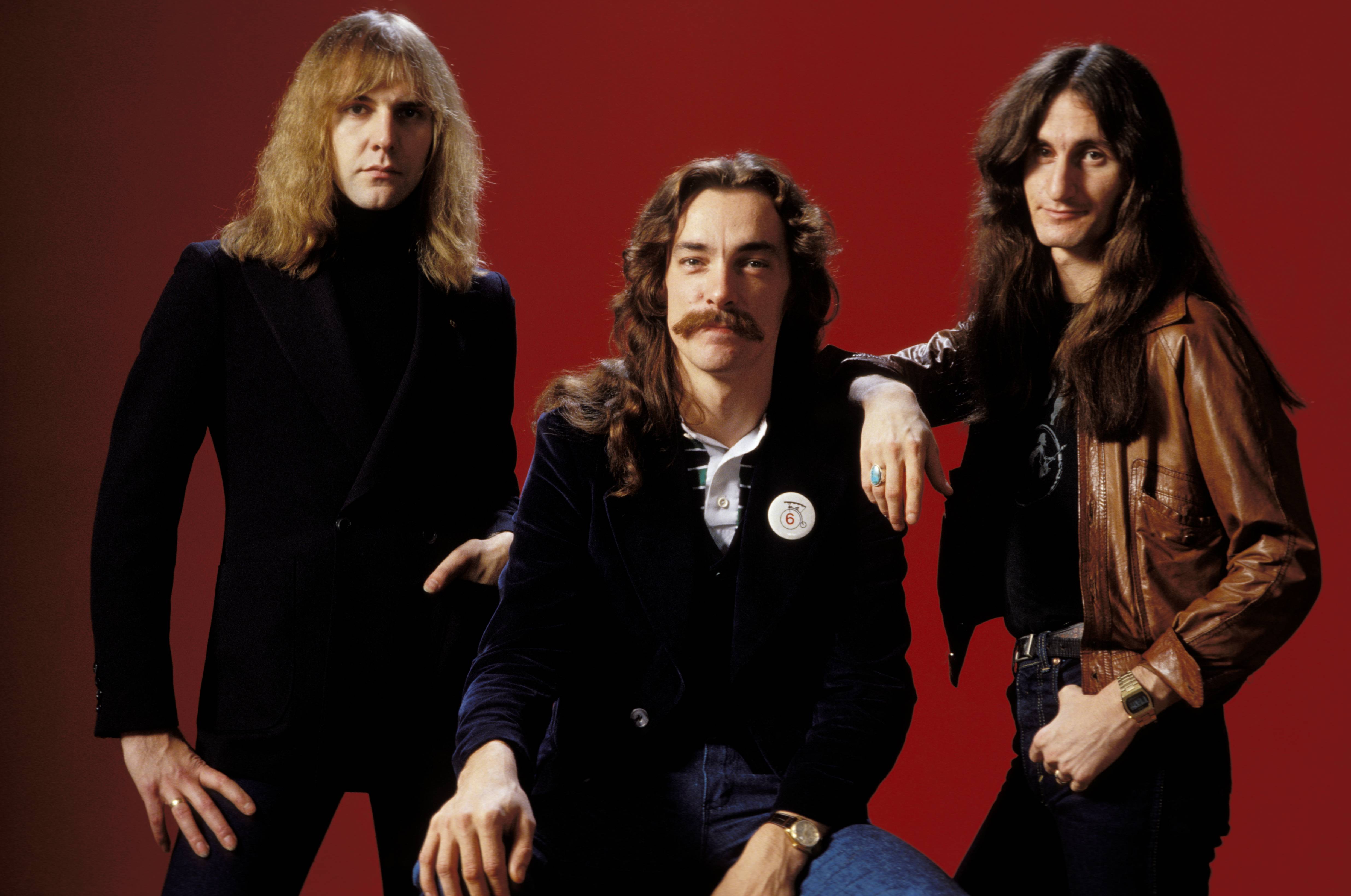
La Villa Strangiato would be a lot of music. As was the fashion, Rush broke it down into sections, each giving us a vignette from Lifeson’s peregrinations in the subconscious mind – e.g. Buenas Noches, Mein Froinds!, A Lerxst In Wonderland, The Ghost of the Aragon.
Writing it was great fun because the whole inspiration was, of course, these crazy dreams that Alex used to foist upon us every morning at breakfast
Geddy Lee
Monsters were a recurring theme. The arrangement behaves like a dream. One minute your here, the next your there, out up on Danforth And Pape, through the looking glass as Toronto dissolves into dreamscape.
As was Rush’s wont, they didn’t take themselves, nor their critics, too seriously. La Villa Strangiato is subtitled An Exercise In Self-Indulgence.
“I remember writing it was great fun because the whole inspiration was, of course, these crazy dreams that Alex used to foist upon us every morning at breakfast,” said Geddy Lee, speaking to Prog magazine in 2018. “He’d start, ‘You’ll never guess what I dreamed last night…’ and the groaning would begin! But it was a really fun, visual and musical exercise, constructing a soundtrack to an insane person’s dreams!”
Recollections differ as to whether Rush got the whole of La Villa Strangiato down in one take. Everyone can agree that this was the intention. In Lee’s interview with Prog, he said it was definitely more than one take, that they recorded the track in four parts.
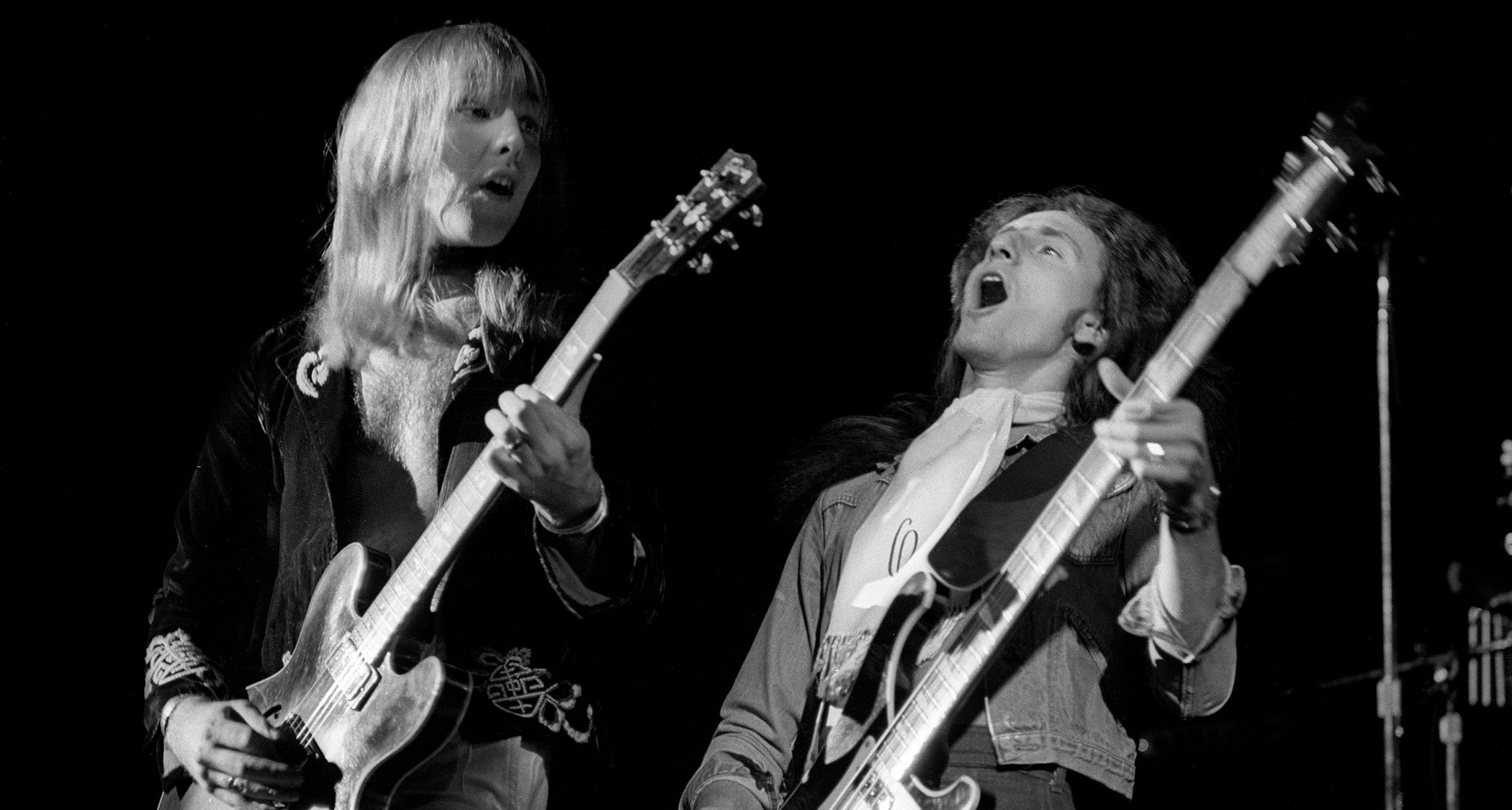
“We divided it into four, focused on those and then used the good old magic of editing tape to stick them together into one cohesive piece,” he said. “Those were the days before click tracks and that digital, metronomic attitude towards putting music together. So it was very much down to how you felt in the moment. Sometimes you’d get excited and you’d speed up, and sometimes that’s the way it should be. That's why it feels so live.”
When speaking to Guitar World, Lifeson said it was a one-shot deal, with everyone set up in the studio to run through it live together, baffles to separate the instruments. They recorded and then he overdubbed his solo.
Now, a lot of time has passed. Lifeson is unsure of what went on with the overdubs. One thing is for sure; you can still hear the print-through of his solo. La Villa Strangiato still sounds live, and feels live – and that was the intention whether it was one take or more.
Lifeson’s guitar tone on Hemispheres was coloured by the hallowed CE-1 Chorus Ensemble, which introduced Boss pedals in 1976. Lifeson was an early adopter. It would be a go-to effect for the foreseeable future. But the chorus tones on La Villa Strangiato was a Roland Jazz Chorus, the guitar his Gibson semi-hollow.
“By that time I had my ES-355, and my acoustics were a Gibson Dove, J-55 and a B-45 12-string,” he told Guitar World. “I had my Marshall in the studio. I had the [Fender] Twin and two Hiwatts, which I was also using live, but the Marshall was my real workhorse.”
Hemispheres was famously a tough record to make. Lee describes as like “pulling teeth” and part of the issue was they never had the time to rehearse a lot of the material before arriving in Wales. They would write at the farmhouse then work out how they were going to record it at Rockfield. The ideas were coming. That was not the problem. The key they were writing in was, and it would royally mess with Lee’s vocals.
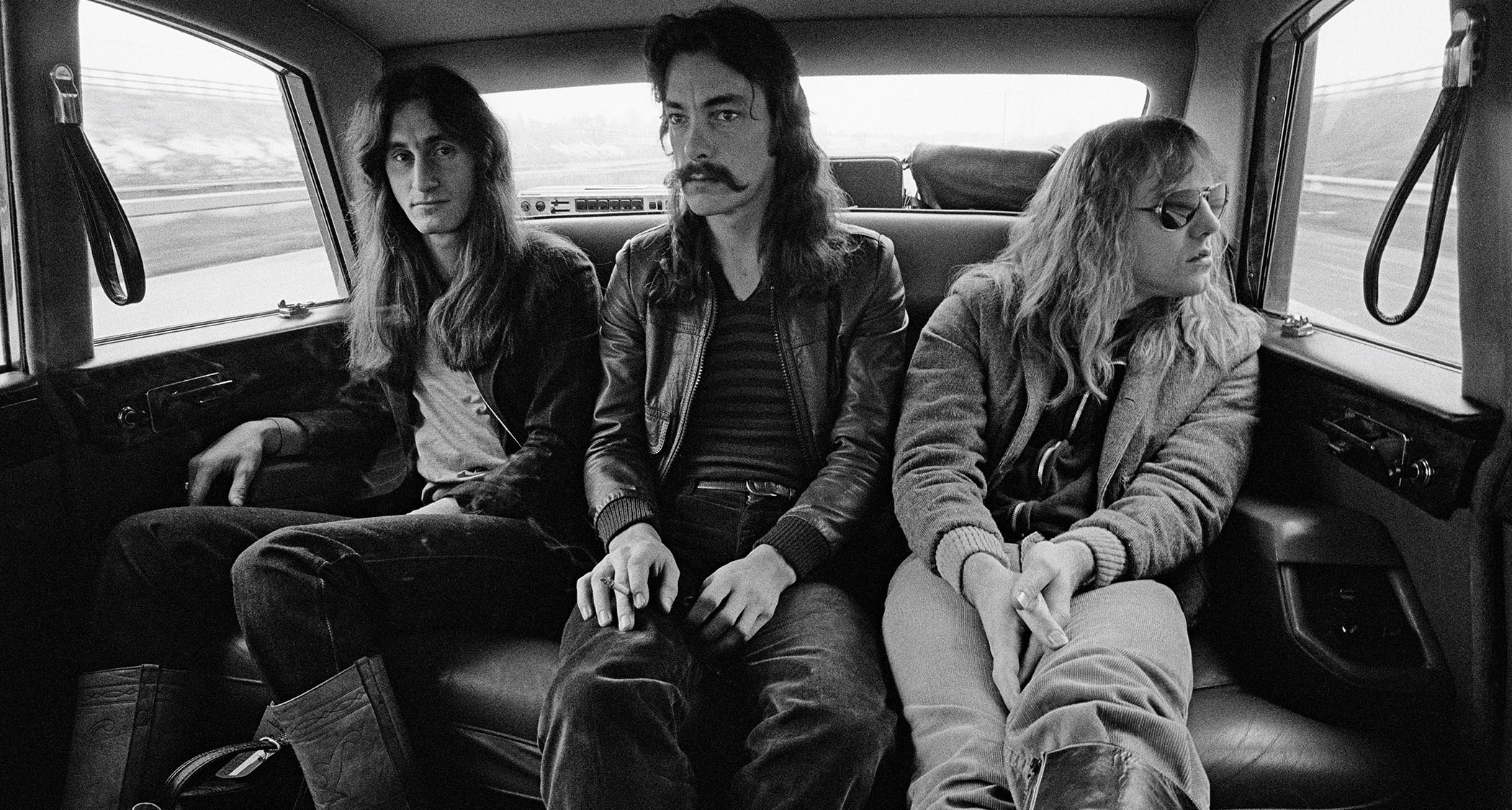
“We never got a chance to kind of play it out and rehearse it, and for me to see where the range was,” said Lee, speaking to MusicRadar in 2024. “It’s one thing to sit down with a guitar, thinking, ‘OK, that’s going to work like that.’ But once you finish it and sing it out, you go, ‘F*ck, this is high!’ This whole record really pushed me into the upper register.”
“Hemispheres was very, very difficult to make. It was very hard,” says Lifeson. “Geddy was in a higher range. It was a full tone up from his comfort range, plus he tends to sing in the upper harmony, whatever the upper harmony would have been. Yeah, that record was a really difficult one.”
There were technical issues. The band’s new foot pedal system did not work as advertised. A lot of time was wasted. Checking out of Rockfield, Hemispheres still needed a lot of work. When they should have been mixing the album at Advision Studios in London, Lee had to finish the vocals, and find a way to reach those high notes. The tension was palpable.
“The whole thing took months, and it was tough. There were a lot of songs that were a lot more difficult to sing than I imagined,” said Lee. “I couldn’t hit a lot of notes. Everything we did was like pulling teeth.
“Every day at Advision I would go into a little vocal room and sing. Some days it would be okay. Other days my voice would be shot, and I’d just have to push through it. It was very frustrating. We spent a lot of time deep in that Hemispheres record. It was very ambitious, hard to record, hard for me to sing. It was even hard to mix. It really took a chunk out of us.”
Not La Villa Strangiato. And yet, this was meant to be difficult one, the ambitious, audacious arrangement to test just how far those creative forces could carry them. Without vocals to worry about, however, it became a vehicle for Rush to just play, let their hair down and have some fun. La Villa Strangiato is the sound of Rush living the dream – or dreams, plural – with a track that didn’t need lyrics to tell its story.
No wonder it became a fans’ favourite from Hemispheres, and that both Lee and Lifeson recall it fondly after all these years.
It was nice to have an instrumental that we could just play and have fun
Alex Lifeson
“Doing something like that gave us licence to change as often as we wanted, to make the music as complicated as we wanted, to stylistically shift gears every 30 seconds,” Lee told Prog, a piece published to make Hemisphere’s 40th anniversary. “All of that is free and open to you. That’s the beauty of doing that kind of instrumental.
“You can make it up as you go along, you can decide what the script should be and it doesn’t have to bear any relation to anybody’s idea of what an instrumental song should be. So it was super fun to do and it’s still super fun to play live. It’s one of my favourite songs to play."
Lifeson agrees. He says it is one of the best things they ever wrote.
“It was nice to have an instrumental that we could just play and have fun,” says Lifeson. “We have always loved instrumentals because we play our hearts out, and it’s kind of a reward at the end of a record to do one instrumental that you can blow it out on!”




